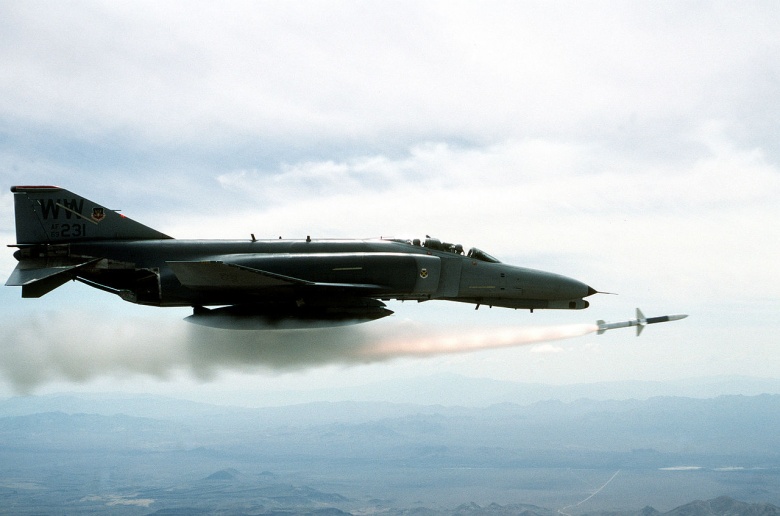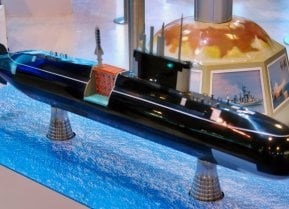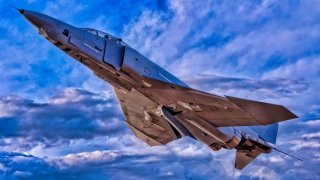Operation Bolo: The F-4 Phantom Gets Revenge in Vietnam
The MiG-21 could fly in all weather and was outfitted with air-to-air missiles that were giving F-105s a headache in the Vietnam War. Enter the F-4 Phantom II.
The F-4 Phantom: The plane went to war in Vietnam and made some serious history, as we explain below.
In 1966, the U.S. Air Force was frustrated in Vietnam. Pilots from North Vietnam, flying Soviet-made MiG-21s, were having their way with American F-105s that were packed with bombs and not as maneuverable as the swift MiGs. The MiG-21 could fly in all weather and was outfitted with air-to-air missiles that were giving F-105s a headache. Enter the F-4 Phantom II.
One daring Air Force ace pilot and another officer devised Operation Bolo that allowed the F-4s to get revenge against the MiG-21s as the Phantoms shot down half of the entire MiG force in one outing with no friendly losses.
The North Vietnamese Were Better Pilots Than Expected
The Vietnam People’s Air Force was getting better and more confident each flight it made with the MiG-21. Much like the guerrilla war on the ground, the North Vietnamese used aerial hit and run tactics. They stayed low out of radar detection and often flew in clouds to mask visual sightings. The pilots were able to scramble their airplanes quickly and hit the skies at a moment’s notice. North Vietnam also had a formidable air defense network that included early warning radar, the lethal SA-2 surface-to-air missile, and various anti-aircraft guns. It was the SA-2 that provided a dangerous adversary for American pilots.
Where Did All the Dogfighters Go?
At that stage of the war in 1966, the U.S. Air Force had been dependent on the F-105 Thunderchief fighter-bomber. Nicknamed the Thud, the F-105 was having difficulty against the quick-hitting MiG-21. Some Air Force officers were worried that the Air Force was not teaching new pilots dogfighting skills. Fighter training was not realistic, they thought, and the Air Force was so risk averse that aviators knew only the basics of flight and were unprepared for aerial combat. The Air Force was shooting down much fewer enemy fighters than it did during the Korean War.
Colonel Olds Comes to the Rescue
One of these doubting officers was Colonel Robin Olds. Olds was a brash, mustachioed “double ace” in World War Two. He flew the P-38 Lightning and the P-51D Mustang and achieved 12 kills against the Germans. Olds had been a confident leader since his days as an All-American football player at West Point.
Leading By Example
But his military service was not over after World War Two. Olds took command of the 8th Tactical Fighter Wing based at Ubon Air Base in Thailand. Olds couldn’t believe that his wing had trouble dogfighting and the colonel was going to set this unit straight. He allowed his fighter pilots to take chances with the F-4 and pull daring flight maneuvers in the face of adversity. Soon the pilots gained the right stuff and were aching to get even with the MiG-21.
F-4 Phantom: Here Is A Way to Get Revenge
Olds and one of the unit’s captains had an idea. Since the MiG-21s were feasting on F-105s and then flying away quickly, Olds thought the F-4s could mimic the F-105s and “employ ingress routes, altitudes, speeds, formations, call signs and communications jargon typical of an F-105 strike package,” according to an account written by Lyon Air Museum. This became Operation Bolo, and it featured the aerial combat prowess of the F-4 Phantom.
Two-Pronged Attack
In January 1967, one group of F-4s approached from the West over Hanoi and the others came from the East from South Vietnam. The East flight had the mission to block the escape of the MiG-21s while the other served as bait.
North Vietnamese Are Surprised
Sure enough, MiG-21s took to the skies to go for what they thought were sitting ducks. Little did they know the F-4s were waiting for them. Once the MiGs figured out they were fighting F-4s, it was too late. The Phantoms feasted on MiG pilots. The North Vietnamese did not know what to do. They tried running for the clouds, but it was too late. The F-4s used radar-guided Sparrows and heat-seeking Sidewinder missiles. These sometimes malfunctioned due to the tropical weather in Vietnam, and the early F-4s at that time had no gun or cannon, so pilots had to be extremely skillful to score a kill. The Air Force also used jamming and countermeasures to spoof North Vietnam’s air defenses.
Bolo Exemplifies Success
Operation Bolo was a stunning success for the Americans. The battle lasted only minutes and the F-4s destroyed at least seven enemy fighters to no friendly losses. This was about half the force of MiG-21s in North Vietnam’s fleet.
Operation Bolo showed that the Americans could dogfight after all. It just took some innovative battle planning and a commanding officer who demanded that their subordinates fly with confidence and swagger. This also gave the F-4 Phantom a fearsome reputation among North Vietnamese fighter pilots.

As for Olds, he became a “triple ace” after 105 missions over Vietnam and was promoted to Brigadier General. Having shot down 16 enemy fighters over the two wars, Olds was awarded four Silver Stars for his exploits. Operation Bolo and flying the F-4 were some of his most memorable experiences.
About the Author
Dr. Brent M. Eastwood is the author of Humans, Machines, and Data: Future Trends in Warfare. He is an Emerging Threats expert and former U.S. Army Infantry officer. You can follow him on Twitter @BMEastwood. He holds a Ph.D. in Political Science and Foreign Policy/ International Relations.
Main image is from Shutterstock. All other images are Creative Commons.


